Looking for tips to make the perfect beard oil recipe? Today, we show you how to make beard oil at home using common ingredients, tailor-made to your skin and hair type. These DIY beard oils foster healthier, fuller beard growth, reduce irritation, make styling easier–and are cheap and easy to make.
View in gallery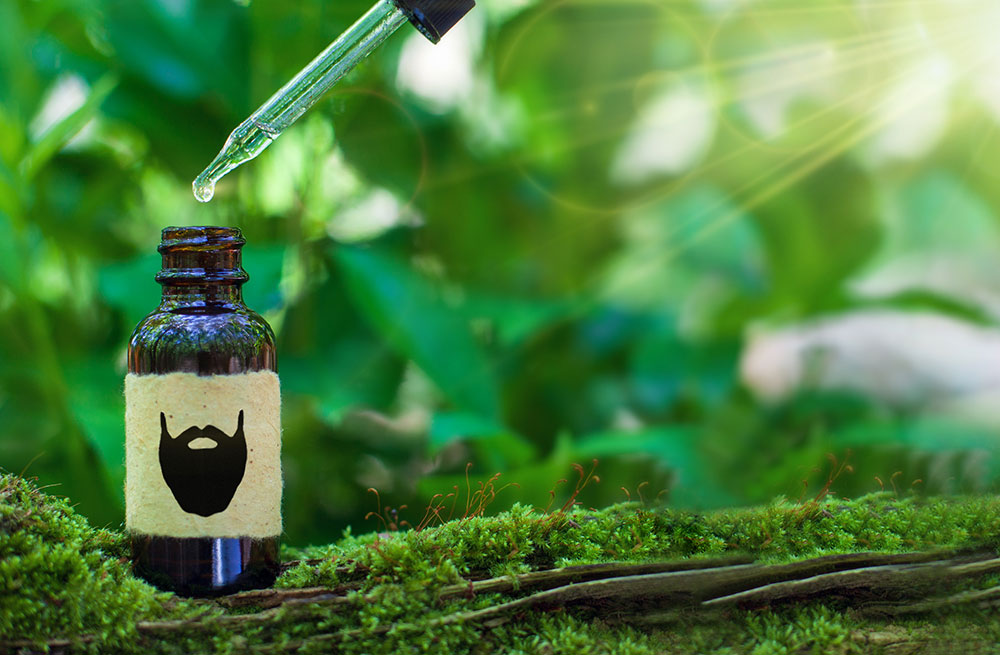
Believe it or not, beards can also have bad hair days. But there’s a secret for turning shaggy back to smooth: beard grooming oil. Besides keeping beards looking their best, beard oils make a lot of difference in nourishing the skin underneath, keeping dryness and itching at bay.
You could be a barber, esthetician, or someone just trying to grow a healthy beard who’s always on the lookout for the best beard oil in the market. And yes, there are some great ready-made beard oils out there; however, it’s also worth considering a DIY beard oil recipe using stuff you might already have at home.
Moreover, making your own beard oil at home could be the best way to customize your beard care as per your taste. Better yet, it only takes minutes to make one.
But if you’re not familiar with homemade beard oil, lucky for you, we’ve sourced some of the most amazing beard oil recipes to grow that ruggedly attractive beard you’ve always wanted.
Table of Contents
Why DIY Beard Oil?
View in gallery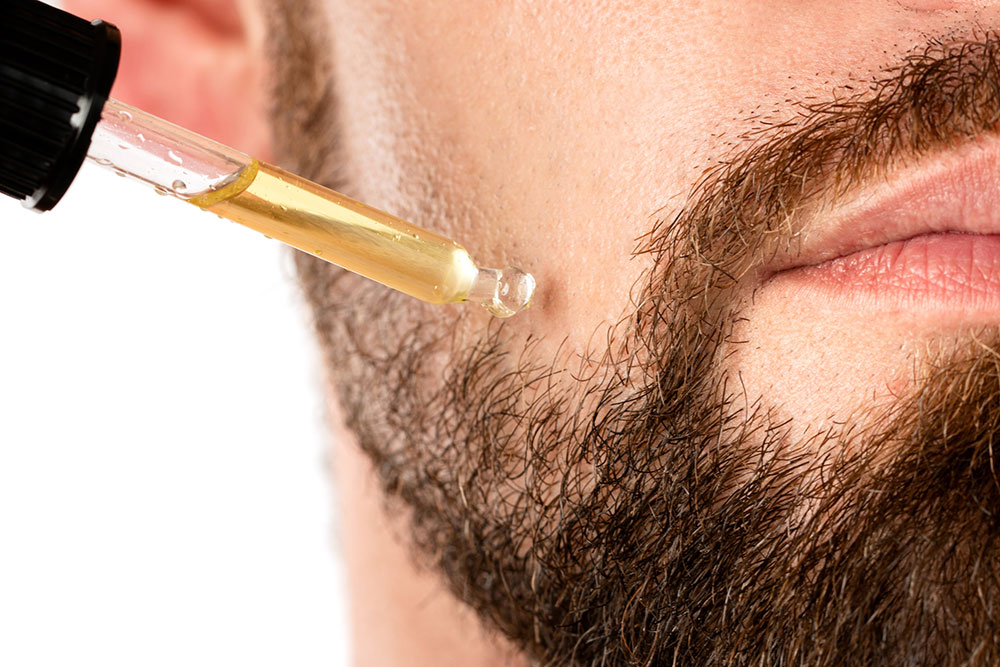
DIY beard oil means you can customize everything from the ingredients you want to use, the scent, as well as the consistency of the beard oil. The thing is, you don’t want just any beard oil – you want the beard oil that can nourish and hydrate YOUR skin, prevent itching and beardruff, and boost beard growth.
Caring for your facial hair costs money, but you can save some dough making your own beard oil. Because while there are plenty of ready-made beard oils out there, the good ones can become pricey.
Now, you’re probably wondering, “is it easy to make beard oil at home?” In fact, it is. Once you have the ingredients, you only need to mix and match them.
Ultimately, the hard part comes down to understanding the qualities of the ingredients in making homemade beard oil and what they can do for your skin and facial hair.
Beard Oil Ingredients
Making your own beard oil recipe is pretty simple. Essentially, you only need to create a blend of two types of oils – carrier oils and essential oils.
Ideally, beard oil will consist of two key ingredients:
- 95% carrier oils
- 5% essential oils
There are a ton of options for both carrier and essential oils out there–each with its unique profile and benefits. Knowing which combinations work best for your skin type or condition is key to making an effective custom beard oil.
Beard Oil Base (Carrier Oil)
View in gallery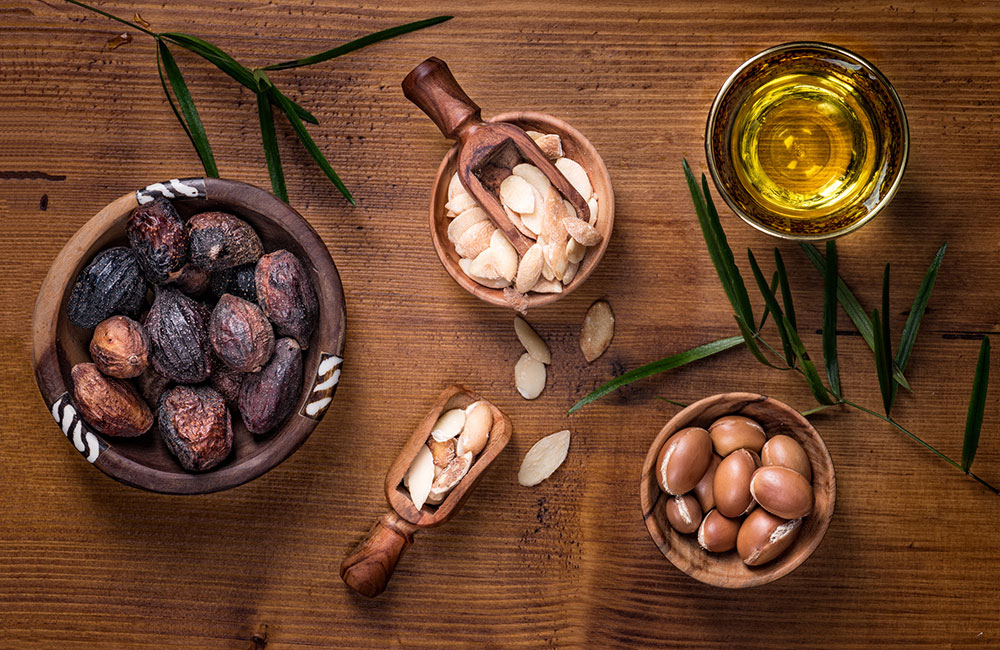
The carrier oil forms the base of the beard oil. Although they aren’t often highlighted on skincare product labels, carrier oils play a more important role than simply a medium for diluting essential oils: They are the ones to provide the important nutrients to your hair and skin.
Some of the widely used carrier oils for beard oils are:
- Argan Oil: Superior oil for preventing damage to beard hair, especially split ends, for its high oleic and linoleic fatty acids. It’s lightweight, fast-absorbing, and will moisturize the skin to fight against beard itch and dandruff. Argan oil works with most skin types and has a long shelf life of three years.
- Jojoba Oil: It’s an excellent ingredient because it’s the closest oil profile to the skin’s natural sebum oil. It’s a natural humectant–it can keep the skin’s moisture, manage different skin problems, and prevent infection. Jojoba oil can keep both the beard hair and skin soft and healthy. It’s also lightweight, non-greasy, and great for all skin types.
- Sweet Almond Oil: It’s rich in mono-saturated fats, proteins, vitamin E, and zinc, making it great for beard growth and skin protection against UV rays. Sweet Almond oil comes with a strong nutty aroma, is lightweight, and is great for treating acne scars.
- Coconut Oil: A great ingredient for beard oils suited to dry skin, although not so much for oily and acne-prone skin. Its fatty acids and polyphenols are excellent for skin hydration and nourishment. But remember to use unrefined coconut oil to take full advantage of its benefits.
- Avocado Oil: The oleic acid in Avocado oil is ideal for dry, damaged skin. It could be a special ingredient for a beard oil that fights dandruff and itchiness, although it’s not super great if you have oily and acne-prone skin.
- Rosehip Oil: Like sweet Almond, Rosehip has a nutty scent, although it’s more subtle. It’s a great ingredient for its natural retinoid properties that can help reverse aging and sun damage.
- Grape Seed Oil: Its neutral scent makes it a great carrier oil as well as its rich vitamin E content. Grape seed oil is known to help heal damaged skin and reduce wrinkles.
- Sunflower Oil: It’s another neutral-scented oil that’s best for all skin types. Sunflower oil is best for its moisturizing properties, ideal for nourishing beard oils that also protect against beard germs and other toxins.
You can pick a single base or mix several carrier oils to make the base for your beard oil recipe.
Pro Tip: Two of the most popular and commonly used oils are Jojoba and Argan oil for their skin and beard-friendly properties. When buying carrier oils, always choose cold-pressed oils stored in dark-colored bottles to preserve the nutrient value of the oils, especially against UV rays.
Best Essential Oils for Beard Growth
View in gallery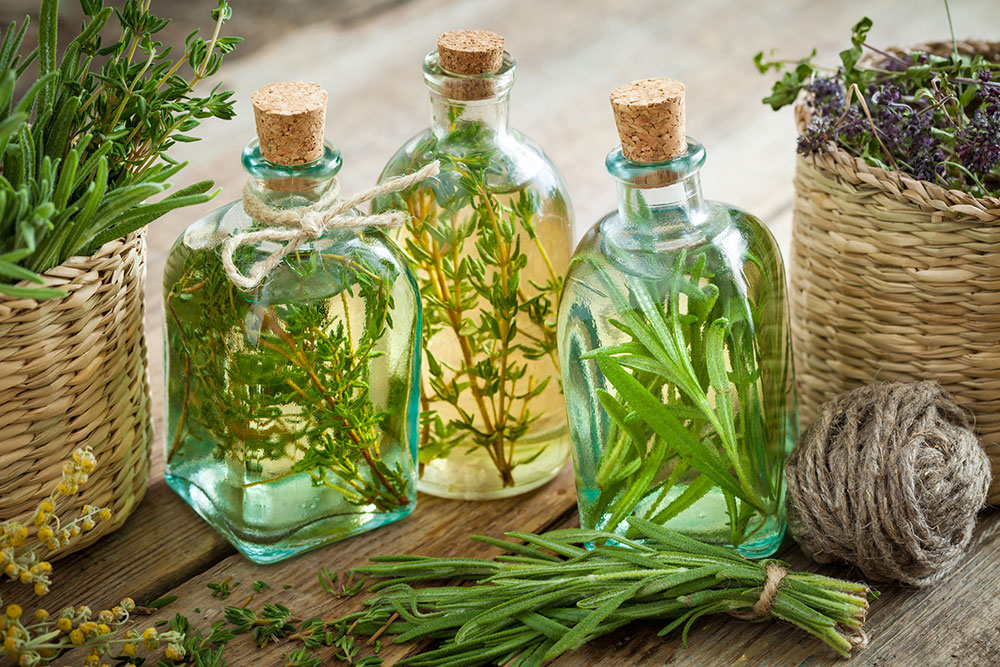
Essential oils provide two things to beard oils: therapeutic benefits and aroma. Usually, they are only 5% of the mix.
Once you have your carrier oil, now is the time to decide what to put in it. Some of the favorite essential oils for making DIY beard oils are:
- Lavender Oil: Well-known scent that many people love–great for its skin detoxing properties, antiseptic properties, and soothing irritated skin.
- Blends well with: Lemon, Clove, Bergamot
- Rosemary Oil: It has many health benefits, such as rejuvenating the skin and stimulating cell growth. Rosemary oil has a familiar woodsy aroma.
- Blends well with: Cedarwood, Lavender, Bergamot
- Eucalyptus Oil: It’s a natural skin moisturizer and is great for treating various skin conditions, thanks to its anti-fungal, antiviral, and anti-inflammatory properties. Eucalyptus oil also promotes hair growth and skin health and has a fresh, minty scent.
- Blends well with: Peppermint, Cedarwood, Lavender
- Cedarwood Oil: Main benefits include stimulating hair growth and reducing skin irritation. Cedarwood oil comes with a pleasant woodsy scent.
- Blends well with: Sandalwood, Rose, Lavender, Rosemary
- Peppermint Oil: Common skincare ingredient for its nourishing and antibacterial properties. It’s good for reducing itch and treating oily skin. Peppermint oil has a fresh scent that leaves a cooling sensation when applied.
- Blends well with: Basil, Lemon, Lavender, Eucalyptus
- Sage Oil: Useful for skincare for its antibacterial, anti-fungal, anti-aging, and antioxidant properties. Sage oil has a strong, distinct scent if you want a strong-scented beard oil.
- Blends well with: Sandalwood, Grapefruit, Cedarwood, Rose, Tea Tree
- Sandalwood Oil: It’s high in antioxidants with antiseptic properties that promote smoother and healthier skin. Sandalwood has a rich, sweet but woody scent.
- Blends well with: Rose, Clove, Frankincense, Violet
- Frankincense Oil: Popular in perfume but also skincare for its anti-inflammatory properties and for reducing acne scars. Frankincense oil comes with a woodsy, spicy aroma.
- Blends well with: Lavender, Sandalwood, Orange
- Tea Tree Oil: It’s a natural antiseptic, anti-inflammatory, and antibacterial, used for treating various skin conditions like acne, razor burn, and sunburns and for hair growth. Tea tree oil has a fresh, warm, and camphoraceous scent.
- Blends well with: Lemon, Basil, Peppermint, Lavender, Sage
- Lime Oil: Main benefits include its antiseptic and anti-aging properties and treating bleeding cuts. Lime oil has a fresh aroma akin to freshly sliced lime.
- Blends well with: Orange, Lemon, Lavender, Grapefruit
Pro Tip: Choose one to three oils to get your preferred scent for your homemade beard oil. But, be careful when handling essential oils. They are concentrated, and when used undiluted (especially in larger amounts) they can irritate and even burn the skin.
How to Make Beard Oil at Home
View in gallery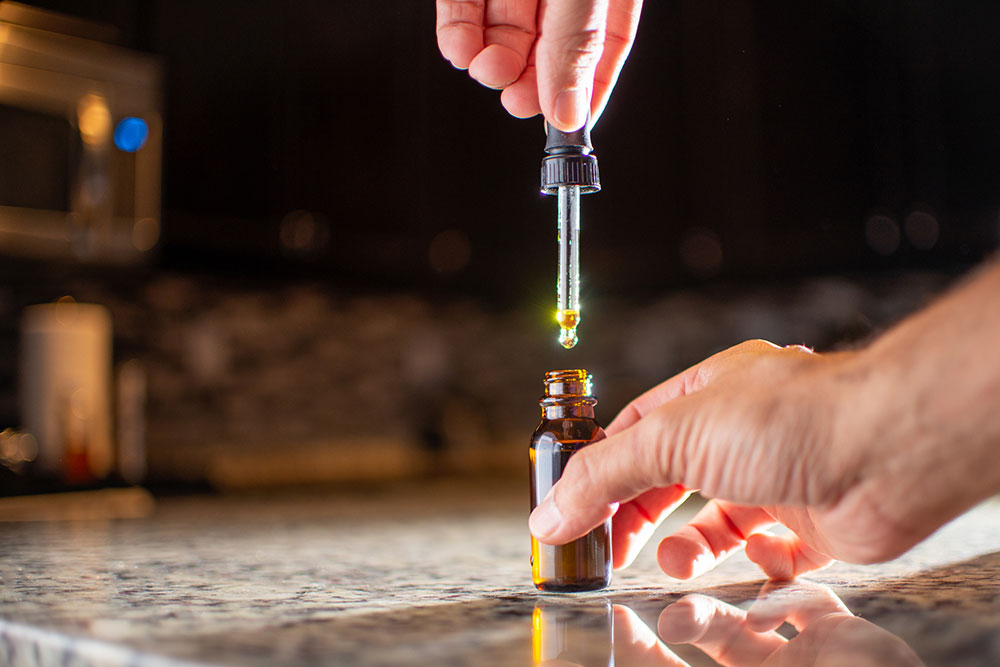
Making your own beard oil doesn’t require much, usually only two key ingredients, and the process is straightforward. In fact, it’ll probably be one of the easiest steps of your beard-grooming and skincare routine.
Here’s how to get started:
Step 1: Gather Your Supplies
Before you can get to mixing ingredients for your DIY beard oil, first, you need some tools. Here’s a checklist of what you’ll need for making your own beard oil.
- Dark-colored glass bottles: Always use dark-colored bottles for your beard oil to protect the ingredients since many oils are light-sensitive and will lose their nutrients when exposed to UV rays. Glass bottles with droppers work very well for beard oils.
- Pipette: You only need one if your carrier oil and essential oil bottles don’t currently have one.
- Tongs: For picking up the glass bottles after boiling them in water for sterilization.
- Graduated Cylinder or Measuring Spoon: You need to measure amounts of carrier oils. After all, precision is crucial when mixing different beard oil recipes.
- Funnel: Using a funnel when pouring oils into the bottles keeps the mess away.
- Paper Towels: For drying the sterilized bottles or wiping any drips and spills.
- Pen and Paper: You have to take note of the proportions of oils you’re using in case you decide to make it again next time.
Step 2: Sterilize the Glass Bottles
Always use sterilized bottles for your homemade beard oil. Do this quickly by tossing the glass bottles into a pot filled with water (removing the droppers first, of course) then bringing it to boil. Once done, get the bottles one by one using your tongs and dry them thoroughly using paper towels.
Step 3: Start with Carrier Oils
Once you have your tools and supplies ready, you can start mixing the oils, starting from making your beard oil base with carrier oils. Here is when you decide whether you want to use a single carrier oil, or mix two or more carrier oils to make your base.
Use the funnel to fill the cylinder depending on the amount of carrier oil you need, then transfer your base to the sterilized bottle, still using the funnel to avoid spills.
Step 4: Add Essential Oils
With the bottle nearly filled with the base oil, it’s time to add the essential oils. But how many drops of essential oils do you need?
It depends on the dilution you want to achieve. Here’s a quick guide:
- 0.5% dilution: 3 drops essential oil for 30mL carrier oil
- 1% dilution: 6 drops essential oil for 30mL carrier oil
- 2% dilution: 12 drops essential oil for 30mL carrier oil
- 3% dilution: 18 drops essential oil for 30mL carrier oil
Pro Tip: If you’re mixing different scents, remember to stick to the drop ratio. For instance, if you need six drops of essential oil using two different oils, you will use four drops of each oil.
Step 5: Mix and Use
Cover the bottle and shake to allow the oils to mix and enjoy!
Pro Tip: Always do a patch test first – take a very small amount of the beard oil and test it out to make sure that you’re not allergic to it.
Storing Your Homemade Beard Oil

After making your beard oil, you need someplace to put it. Ideally, you want to store your DIY beard oil away from direct sunlight, especially the harsh UV rays, to keep the quality of your beard oil much longer.
Pro Tip: Amber glass bottles are best when choosing a container for beard oils. Avoid clear and blue bottles since blue light can pass through them and oxidize the oils.
How to Make Your Own Beard Oil – 5 DIY Beard Recipe Ideas to Try
These recipes only use natural oils to moisturize your facial hair and the skin underneath, keeping your scruff healthy, manageable and smelling great any day.
1. The Basic Conditioning Beard Oil
You don’t have to make fancy recipes for your homemade beard oil. Sometimes, the simplest is the best, like when it comes to beard care. If you haven’t tried making beard oil at home before, this recipe is as beginner-friendly as it gets.
- 2 Tbsp Jojoba Oil
- 2 Tbsp Fractionated Coconut Oil
- 10-12 drops of your preferred essential oil (Lavender, Sage, or Eucalyptus works)
Jojoba and Coconut in this recipe are excellent hair and skin conditioners. After days of applying this beard oil will do wonders in your facial hair.
2. Beard Growing Oil
This homemade DIY beard oil is for anybody tired of their slow beard growth or struggling with a patchy beard.
- 2 Tbsp Coconut Oil
- 2 Tbsp Sweet Almond Oil
- 3-4 drops Castor Oil
- 5-6 drops Rosemary (or Lavender, whichever you prefer)
There is no magic combination that can make a beard grow (if you can’t grow it in the first place), but this blend will maximize your skin and beard hair’s health to boost its growth.
3. Hydrating Beard Oil
This beard oil recipe is best if you have dry and itchy skin or suffering from the dreaded beard dandruff. The ingredients in this recipe are very effective in restoring moisture in your skin.
- 2 Tbsp Jojoba Oil
- 2 Tbsp Argan Oil
- 5 drop Castor Oil
- 5 drops Cedarwood Oil
Mix everything inside a sterilized glass bottle until they are blended, and that’s an easy DIY beard recipe to say goodbye to itchy scruff and beard dandruff.
4. Fresh Morning Beard Oil
This homemade blend is refreshingly floral but also incredibly hydrating and nourishing with lots of vitamin C to give your facial hair a natural sheen worthy of envy.
- 2 Tbsp Coconut Oil
- 1 Tbsp Sweet Almond Oil
- 3-4 drops Eucalyptus Oil
- 3-4 drops Sage Oil
Add everything inside a sterilized vessel, mix thoroughly, and enjoy. This recipe is a perfect addition to your morning routine, especially with the vibrant aroma of Eucalyptus and Sage.
5. Woodsy All-Day Beard Oil
This deep wood-scented beard is perfect for deep conditioning without being greasy, perfect for all-day use. If you struggle with heavy beard dandruff and itching, the Coconut and Jojoba in this will give your skin and hair deep nourishment.
- 1 Tbsp Jojoba Oil
- 1 Tbsp Coconut Oil
- 4 drops Eucalyptus Oil
- 3 drops Sage Oil
Combine everything in a sterilized glass container, mix well, and enjoy your fancy smelling beard all day long.
Why You Should Definitely Use Beard Oil
View in gallery
If you’re still not convinced why beard grooming oil should be part of your beard care regime, consider the many benefits:
- Avoids Beard Itch: Ah, yes. The one thing that almost every bearded man has had a problem with. It’s probably one of the biggest reasons why some forgo the beard altogether and just shave it all off. But beard oil conditions the hair, so it’s less prone to itching and irritation.
- Promotes Beard Growth: If you’re out of luck growing a longer, healthier beard, using beard oil is your best bet. Its oil ingredients are rich in vitamins A, C, and E and minerals that keep the skin and beard healthy and improve the conditions for beard growth. These vitamins and minerals assist with preventing hair loss too.
- Fights Beard Dandruff: If you see dandruff in your hair, you can call it the “beardruff.” Usually, that happens because of the lack of sebum oil, causing the skin to become extra dry and flaky. Hydrating the skin with beard oil will give it the moisture it needs.
- Soft and More Manageable Beard: Each day you apply beard oil is a day towards softer, smoother facial hair. And with the hydration it provides, there are fewer tangles, making it easier to manage and style beards.
- Beard That Smells Amazing: Applying beard oil is almost like applying cologne with various scents available – citrusy, woody, fresh, and so much more. Although most beard oils carry a subtle aroma, others have stronger scents but there are also unscented beard oils if you don’t want them to take over your perfume.
- No More Damaged Beard: When your facial hair is not nourished and moisturized, expect it to dry out. Eventually, the damaged beard grows split ends and, worse, becomes prone to shedding. But if you keep beards nourished, these won’t be problems.
- Nourish and Hydrate the Skin: Beard oils condition not only the hair but also the skin underneath. The benefits of some great carrier oils and essential oils in beard grooming oils greatly help with skincare.
Best Beard Oil Recipe: Parting Words
At this point, you really don’t have an excuse for not using beard oil. Not only are there tons of great products on the market, but it’s super cheap and easy to make your own beard oil tailored to your skin and hair type.
All you need is a handful of carrier and essential oils, a few components to mix the ingredients together, a little creativity, and a beard to oil up. With today’s guide under your belt, the hardest part–research–is done for you.
So what are you waiting for, get out there and DIY some beard oil! If you concoct a particularly nice beard oil recipe, make sure to share it in the comments below.




